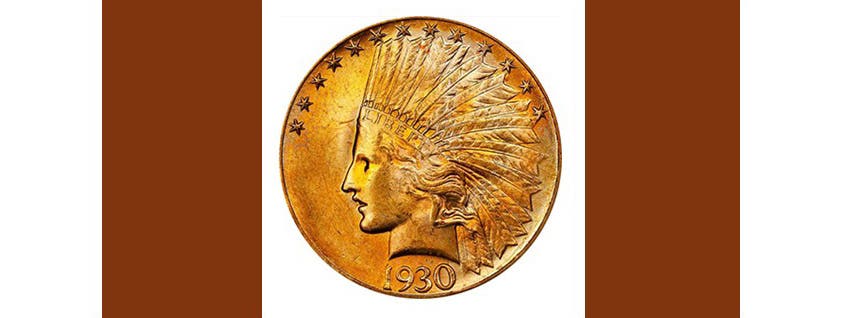The 1804 Quarter Eagle
When we think of great coins dated 1804, it’s only natural to think first of the famous 1804 silver dollar. With its most recent price topping $7 million, the sale…
When we think of great coins dated 1804, it’s only natural to think first of the famous 1804 silver dollar. With its most recent price topping $7 million, the sale of any 1804 dollar is an event, and it deserves all the attention it gets. The second of the 1804 coins that usually comes to mind is the 1804 gold eagle. It was also made for proof sets in 1834 in the production that resulted in the first 1804 dollar. That was because the gold eagle had been suspended at the same time as the silver dollar back in 1804.
However, there is another coin of note from the year 1804 that tends to get very little attention: the quarter eagle. With a 13-star reverse, it is a significant rarity, and even the 14-star variety is an awfully good coin.
To understand the 1804 quarter eagle, we must understand the times. In 1804, the U.S. Mint was in a place where officials were about at the end of their rope. The policy that allowed those who supplied the gold and silver to request the denominations produced from their metal was simply not working.
When people or institutions supplied gold or silver, they would almost always ask for the highest denominations. That means there were lots of silver dollars being made but very few half dimes and almost no quarters. It was similar with gold. Gold eagles would often be produced and used as reserves. The half eagle also had a following since it was close in size to popular European coins. But the quarter eagle had almost no demand. In fact, it was so bad that someone suggested that quarter eagles were only ordered as novelties.
The situation was not helping a national coin shortage. There was no balance in the production at the Mint, which saw officials suspend the production of silver dollars and gold eagles. However, the suspension was not likely to make an immediate difference in the mintage of quarter eagles.
The official mintage of the 1804 quarter eagle is just 3,327 pieces. While low, at the time it was actually a new high mintage for a quarter eagle. As they had been made a number of years, that tells you all you need to know about the lack of demand.
In addition, the mintage was divided between examples with 13 stars and with 14 stars. We don’t know how many were made of each variety, although some have suggested that the mintage total for the much tougher 13-star reverse was 500. That is a nice round number, but there is no real proof. The best indication might come in the numbers available today, although even that is far from a perfect science.
We do know that the 14-star reverse is the more available of the two. It is at available-date prices, even though no early quarter eagle can really be called available. It is priced at $6,000 in F-12 and goes up to $28,000 in MS-60. Like any quarter eagle of the time, it is a coin where a weak spot or two can be expected. The 1804 is rarely seen in Mint State. Like other dates from the period, XF-40 is a much more likely grade.
In the case of the very scarce 13-star variety, an F-12 is currently priced at $45,000 while an MS-60 is at $200,000. These prices are basically estimates since the 13-star variety is rarely, if ever, offered for sale.
Attempting to see just how rare the 13-star variety is and perhaps get some idea of what its mintage might have actually been, we see that Numismatic Guaranty Company has graded 47 examples of the 14-star variety and just two examples of the 13-star, with the nicer being an AU-58. The Professional Coin Grading Service totals show 61 examples of the 14-star variety and just three of the 13-star variety with the best of the three being an AU-55.
What we learn from these totals is that the $200,000 price in MS-60 may well be academic since there might not be any Mint State examples of the 13-star variety. It’s been written that there might not even be an AU-50. It appears that the AU-50 level is possible but Mint State remains highly doubtful.
The total of five graded makes the suggested 500 mintage look optimistic but still possible. The total, however, suggests that the 13-star variety is a major rarity because there are unlikely to be many more.








